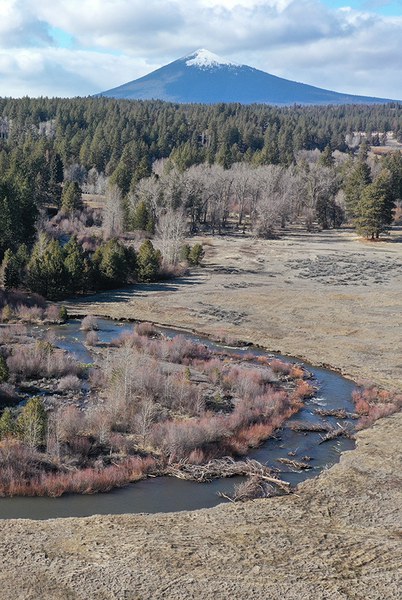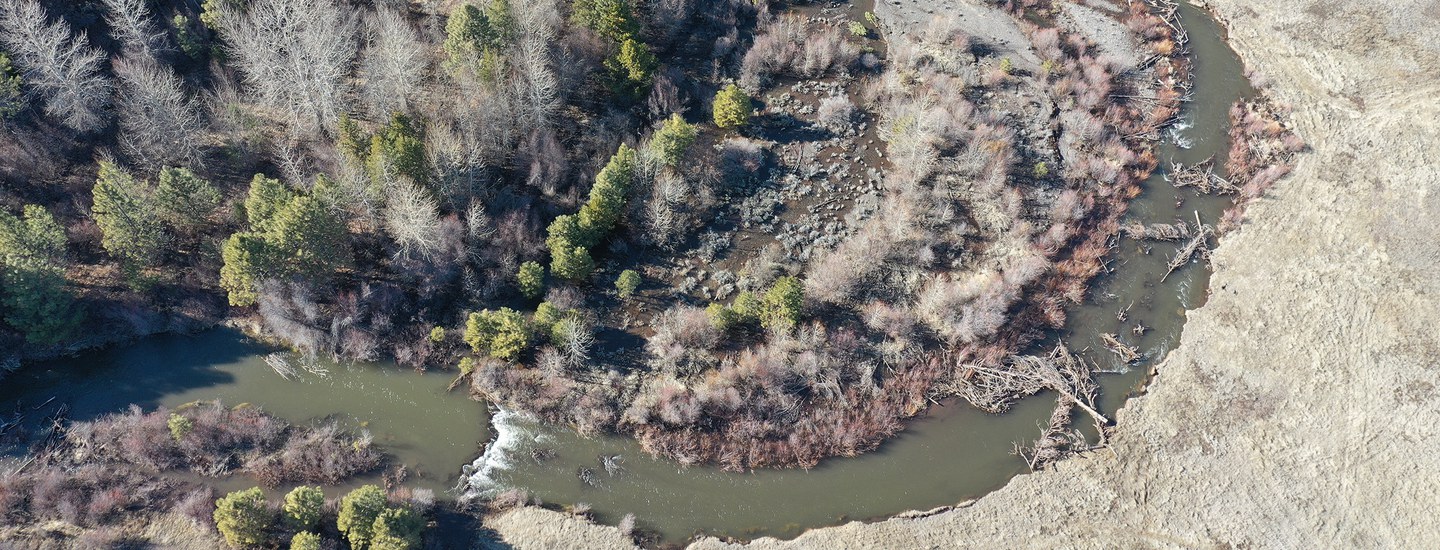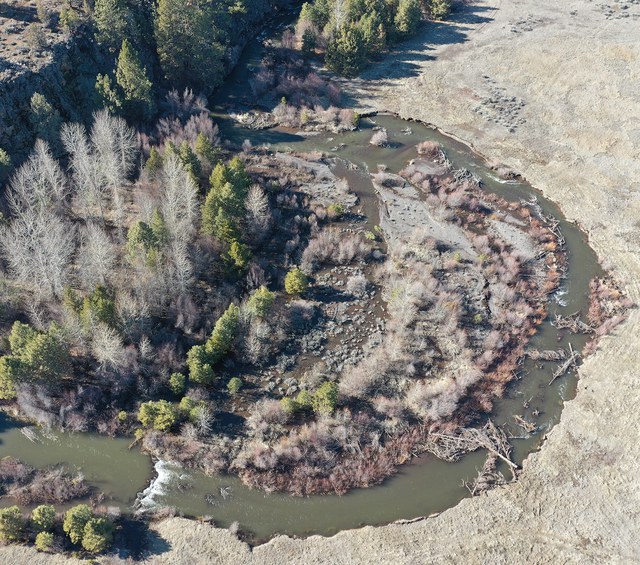
One of the goals of this type of low-tech restoration is to let nature take the lead. This means the structures used during restoration are designed to adapt and change the shape of the creek as high flows move through Whychus Creek. During the winter, it is very common to see high flow events on Whychus Creek. With snow melting, heavy rains, and/or rain-on-snow events, the creek can see large influxes of water during and after storms and/or on warm days. These high flows also help shape and move the restoration forward!
We are happy to report that after a couple of winter high flow events, the latest round of restoration structures are looking good! The large wood jams are holding strong and continue to push the creek in different directions. This will eventually help Whychus Creek move from a single channel into a braided series of channels that spread out across the valley floor. In addition, almost all of the small dam-like structures (called beaver dam analogs or BDAs) also remain in place, instead of being swept downstream, which can sometimes happen with high flows. These smaller structures are designed to help Whychus Creek connect to the surrounding meadow.
It's great news that the structures are doing what we intended, and we look forward to continuing to share how the restoration project at Willow Springs Preserve evolves. Stay tuned!
Learn more:
- Restoration of Whychus Creek at Willow Springs Preserve
- Rain-on-snow Events in Central Oregon
- Wood is Good: The Importance of Woody Debris


